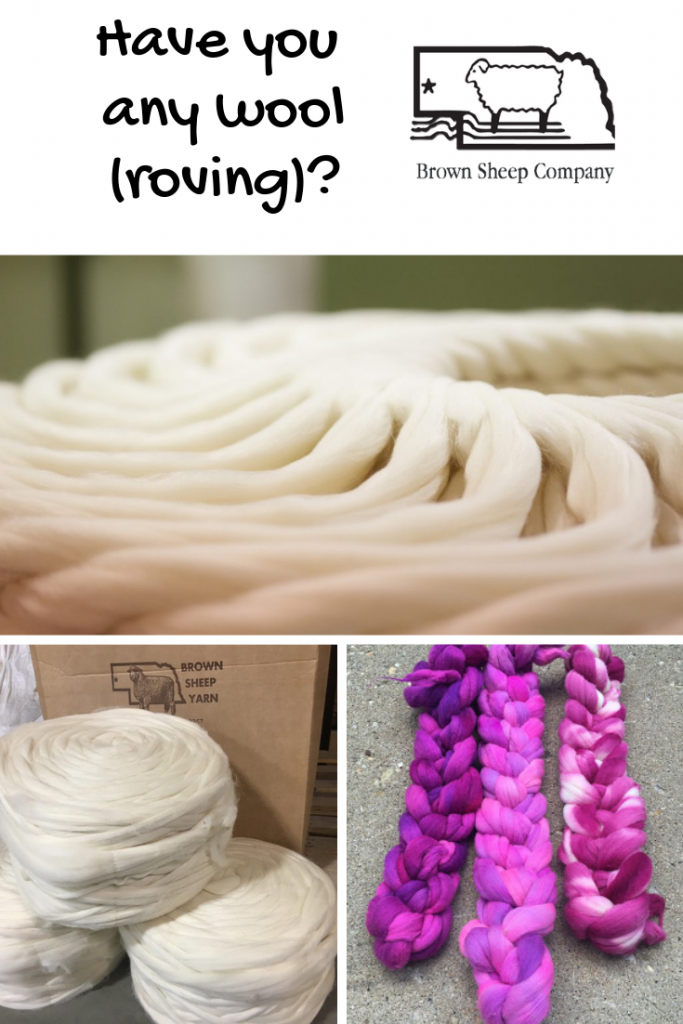Have you any wool (roving)?
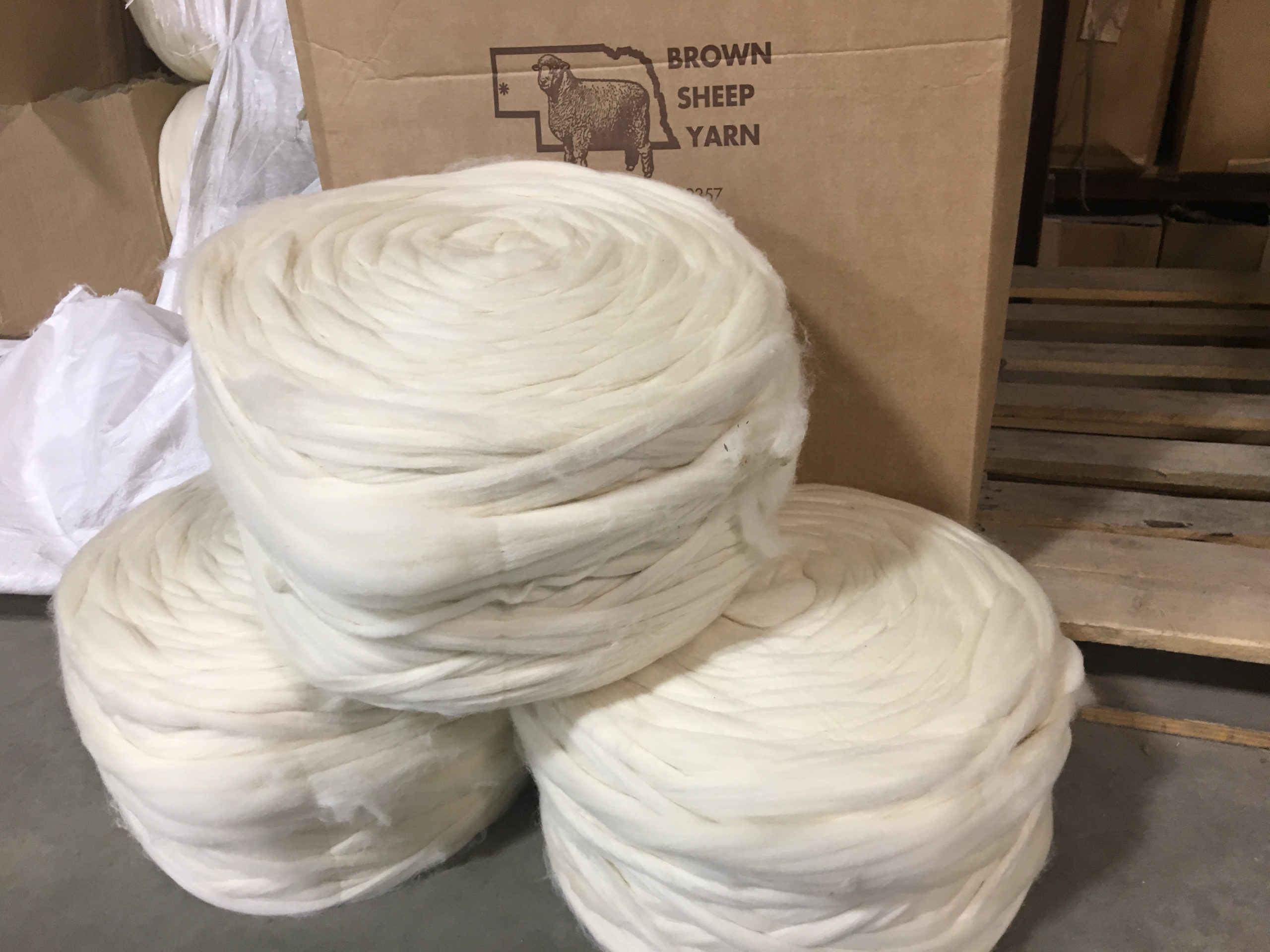
You never know where your journey into the world of fiber arts might take you. We all know the fiber arts are addictive – something about working with wool in its many different forms tends to draw us in. How many of us begin with one craft (say, knitting) and then get swept into spinning or punch needle or felting, or a combination of all the above? Many come to love and appreciate the natural beauty of wool in any form.
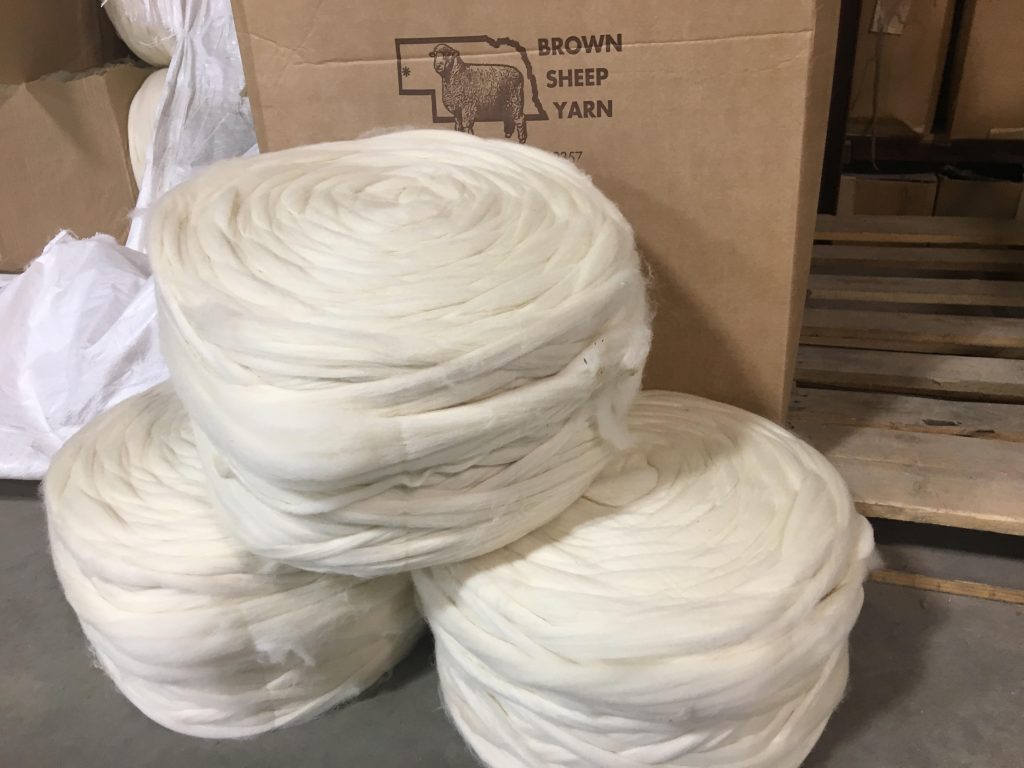
Did you know that we sell our wool in the form of unspun roving? If you are not familiar with the term, roving is basically ready-to-spin wool. Our roving has made a journey from the slopes of Colorado, to the wash house in South Carolina where it is washed of dirt and grease, then combed and carded – finally it ends up at our mill ready to become yarn! The combing and carding processes align the wool fibers so that they run parallel to each other – this allows for a smooth finish and a less scratchy wool yarn.
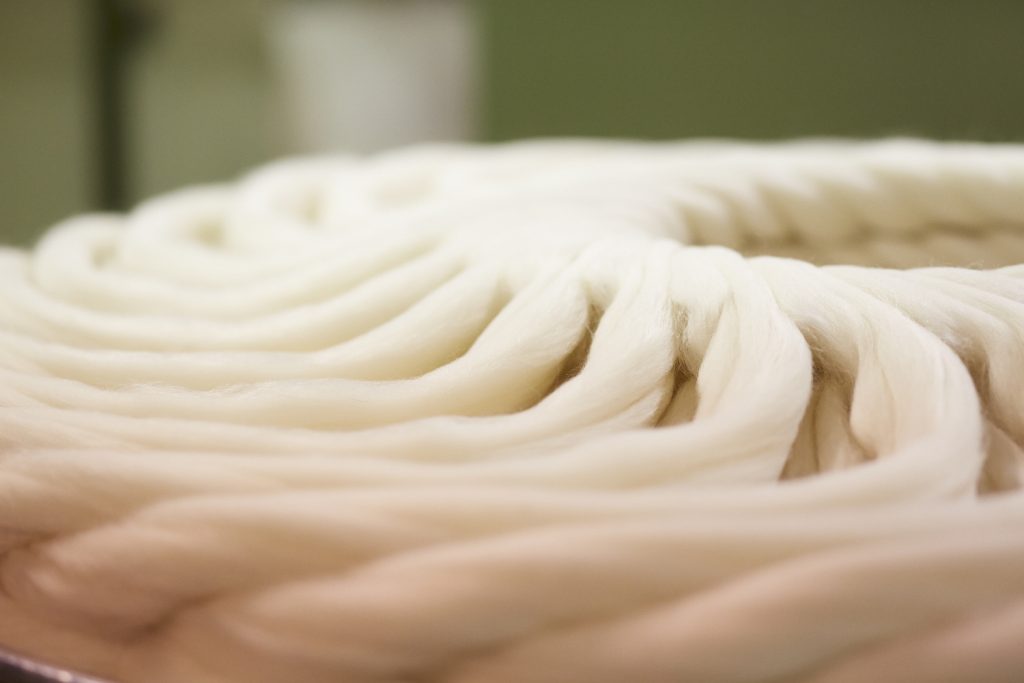
For you experienced spinners who know the lingo, our roving is a Colombian-Rambouillet cross of about 23-25 microns in fineness. This means our wool is a good quality and has a nice feel – but is not the ultimate in fineness such as merino, which is less than 24 microns in fiber diameter.
What are fiber artists using wool roving to make? The most popular use is for hand spinning – either on a spinning wheel or using a drop spindle. Wool is an excellent fiber for learning to spin – it has tiny barbs, making it easier to draft in your hands than more slippery fibers like silk. Plus, wool adds strength and resilience to other fibers – for example, a blend of wool and alpaca creates a wonderful, soft yarn that’s stronger and more functional than a pure alpaca fiber yarn.
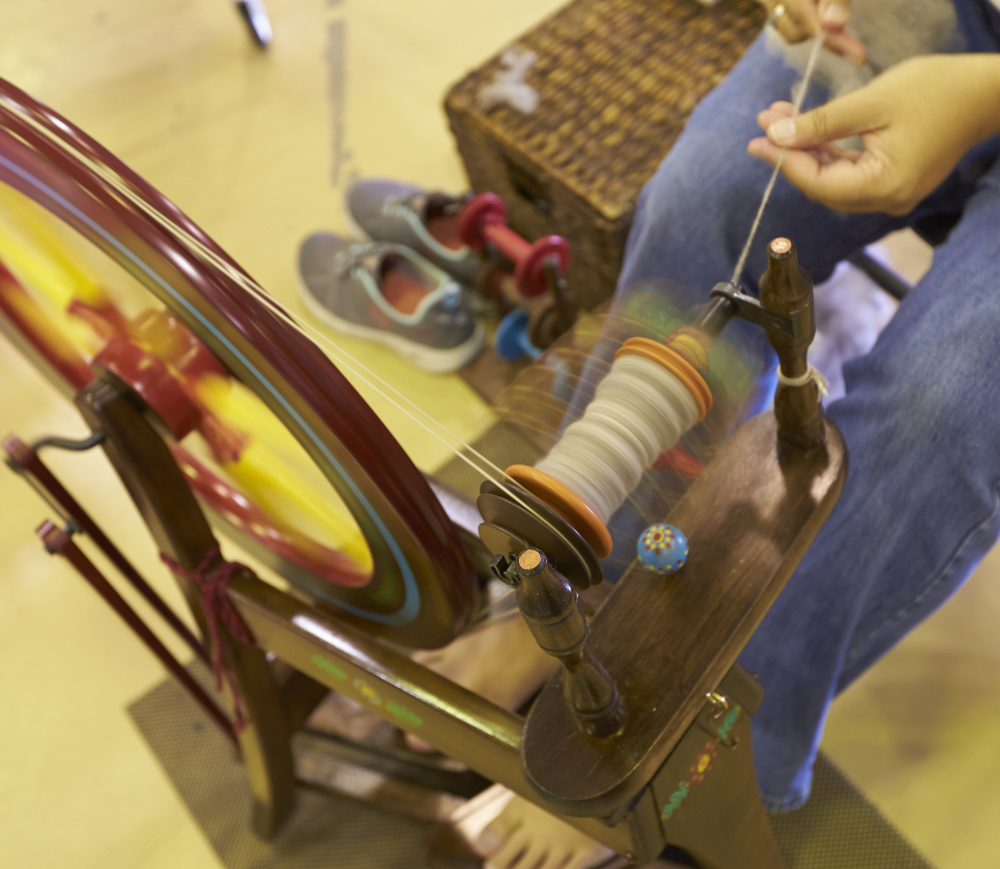
Home dyers can go wild experimenting with dyeing roving, and then spinning into yarn for the ultimate in custom-made. There are so many possibilities for home dyeing – from planting a natural dye garden to dyeing with Kool-aid and more.
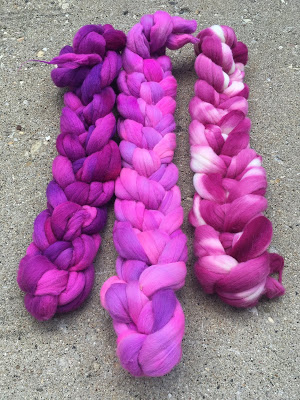
What could be better stress relief than repeatedly stabbing some wool with a needle? This is the essence of needle felting – a craft that creates 2-dimensional pictures or 3-dimensional sculptures of wool. Needle felting can be unbelievably intricate – or a simple project can be done by kids who are old enough to safely use a needle felting tool! Many needle felters use roving to create the foundation of their project, then deconstruct colorful wool yarn to layer over the top.
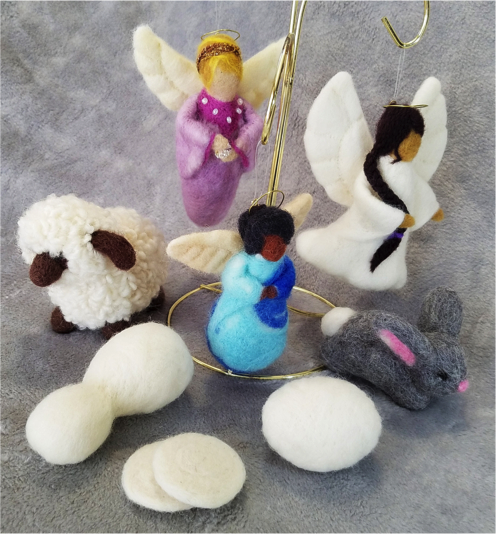
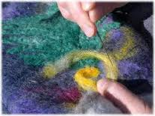
For many of us, yarn and wool becomes part of our identity. Our close friend decided to use Brown Sheep Company roving as an integral part of her wedding decor and theme — she even used small felted wool balls as part of her bridal bouquet. The result is stunningly beautiful, and adds a touch of her personality and passion to the atmosphere of the wedding.
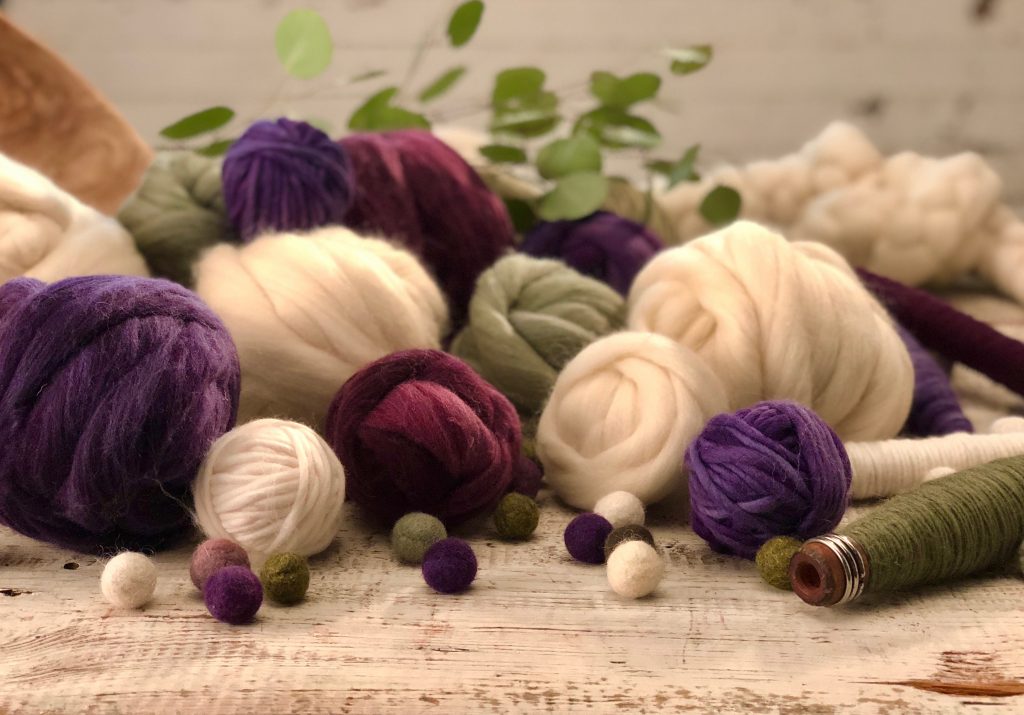
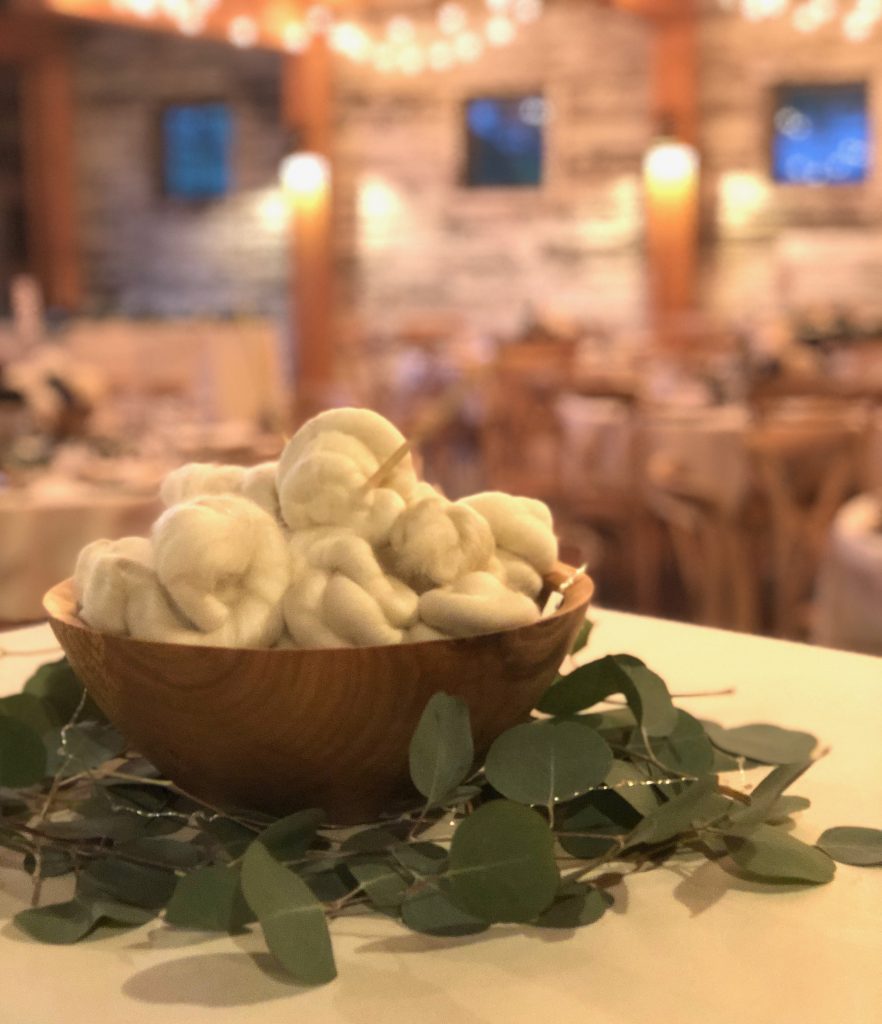
We hope you will be inspired to celebrate your love of wool in a new way! Be sure to visit your local retailer to find our roving and more.
Like this post? Pin it!
